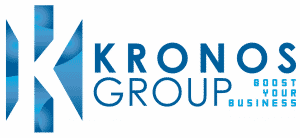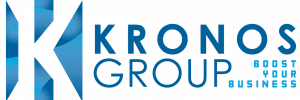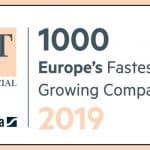How can businesses overcome supply chain risks with digital procurement tools?

Summary
The present-day supply chain influences include natural disasters, geopolitical issues, supplier bankruptcies, demand volatility, and cybersecurity threats while the impact of supply chain risks for businesses affects operations, finances, and reputation.
The digital procurement tools and their functionalities enhance visibility, streamline processes, and facilitate collaboration. These tools include e-procurement platforms, supplier management systems, contract management software, sourcing and procurement analytics, supplier collaboration portals, and integration with ERP systems.
The digital tools that enhance visibility, streamline processes, and facilitate supplier collaboration provide real-time visibility into procurement processes, automate workflows, and foster collaboration with suppliers. By leveraging digital procurement tools, businesses can optimise operations, mitigate risks, and drive efficiency and agility in their supply chain management practices.
In today’s intricate business landscape, businesses undergo a series of challenges towards the management of supply chains. In recent times, businesses have witnessed natural disasters, geopolitical tensions, economic uncertainties, and supplier disruptions—the risks are diverse and ever-present. These challenges can significantly impact operations, leading to delays, increased costs, and even reputational damage.
Procurement is an inevitable business process. A procurement management program is a game-changer in the realm of supply chain management. With digital technologies, businesses now have powerful tools at their disposal to mitigate these risks effectively. From enhancing visibility and transparency to streamlining processes and fostering collaboration with suppliers, digital procurement tools play a crucial role in safeguarding businesses against supply chain disruptions.
In this blog post, we will explore the various challenges businesses face in managing supply chain risks and delve into how procurement tools can help mitigate these risks, ensuring smooth operations and greater resilience in an increasingly volatile business environment.
What is the present-day supply chain influenced by?
The business environment undergoes several challenges and more commonly, businesses gear themselves toward the development of comprehensive risk management strategies and the implementation of measures to mitigate these risks effectively, profitably, and successfully.
Procurement tools play a vital role in enhancing visibility, facilitating collaboration, and enabling proactive risk management, empowering businesses to navigate the complexities of modern supply chains with greater resilience and agility.
Natural disasters
Natural disasters such as earthquakes, hurricanes, floods, and wildfires can have a devastating impact on supply chains. They can disrupt transportation networks, damage infrastructure, and cause production facilities to shut down temporarily or permanently. For example, a hurricane might damage ports, leading to delays in the shipment of goods or a flood might destroy warehouses, resulting in inventory shortages.
Geopolitical issues
Geopolitical tensions, trade disputes, and regulatory changes can create uncertainties and disruptions in supply chains. For instance, tariffs imposed on imports can increase costs for businesses, while trade embargoes or sanctions can restrict access to critical raw materials or markets. Political instability in certain regions may also lead to transportation disruptions or the closure of borders, impacting the flow of goods across international borders.
Supplier bankruptcies
Dependence on a single or limited number of suppliers increases the risk of disruptions due to supplier bankruptcies. If a key supplier goes out of business or faces financial difficulties, it can lead to shortages of raw materials or components, halting production processes and affecting the timely delivery of products to customers. Even if alternate suppliers are available, transitioning to new suppliers can take time and may result in additional costs.
Demand volatility
Fluctuations in customer demand, market trends, and consumer preferences can create challenges for supply chain management. Sudden spikes or drops in demand can lead to inventory imbalances, excess stock, or stockouts. Forecasting errors, seasonal variations, and unforeseen changes in market conditions further exacerbate demand volatility, making it difficult for businesses to optimise inventory levels and production schedules.
Cybersecurity threats
In a digitalised world, cybersecurity threats pose a significant risk to supply chains. Cyberattacks targeting logistics systems, procurement platforms, or communication networks can disrupt operations, compromise sensitive data, and cause financial losses. From ransomware attacks to data breaches, businesses must implement robust cybersecurity measures to protect their supply chains from malicious actors and ensure the integrity and confidentiality of their information.
What is the impact of supply chain risks on businesses?
Supply chain risks can have profound implications for businesses, affecting various aspects of their operations, finances and reputation.
Disruptions in operations
Supply chain risks, such as natural disasters, supplier bankruptcies, or geopolitical issues, can disrupt operations at any stage of the supply chain. These disruptions can lead to delays in production, shipment, or delivery of goods and services. As a result, businesses may struggle to meet customer demand, fulfil orders on time, and maintain consistent service levels. Extended disruptions can even force businesses to halt operations temporarily, causing revenue losses and eroding customer confidence.
Cost increases
Supply chain disruptions often come with more costs for businesses. For example, delays in transportation or production may necessitate expedited shipping or alternative sourcing, leading to higher logistics expenses. In the case of supplier bankruptcies or shortages, businesses may need to secure alternative suppliers at higher prices, renegotiate contracts, or invest in inventory stockpiling to mitigate the risk of future disruptions. These cost escalations can squeeze profit margins and impact the overall financial health of the business.
Reputational damage
Supply chain disruptions can tarnish a business’s reputation, especially if they result in delayed deliveries, product shortages, or quality issues. Customers rely on businesses to deliver products and services reliably and consistently. When disruptions occur, customers may experience frustration, inconvenience, or dissatisfaction, leading to negative perceptions of the brand. Moreover, in today’s interconnected world where social media amplifies both positive and negative experiences, reputational damage can spread rapidly, affecting customer loyalty, trust, and long-term relationships.
Loss of competitive advantage
Businesses that fail to effectively manage supply chain risks may lose their competitive edge in the market. Supply chain disruptions can impede innovation, product development, and time-to-market, allowing competitors to gain market share. Moreover, businesses that consistently face supply chain challenges may develop a reputation for unreliability or inefficiency, further eroding their competitive position in the industry.
Supply chain risks have far-reaching consequences for businesses, ranging from operational disruptions and increased costs to reputational damage and loss of competitive advantage. To mitigate these impacts, businesses must adopt proactive risk management strategies, invest in resilience-building measures, and leverage procurement tools to enhance visibility, agility, and collaboration across their supply chains. By doing so, businesses can navigate the complexities of the modern business environment with greater confidence and resilience.
What are some digital procurement tools and their key functionalities?
Procurement tools encompass a range of software solutions designed to streamline and automate various aspects of the procurement process. These tools leverage technology such as cloud computing, artificial intelligence, and data analytics to enhance efficiency, visibility, and collaboration within the procurement function. Let us explore some key functionalities of digital procurement tools:
E-procurement platforms
E-procurement platforms serve as centralised hubs for managing the entire procurement process, from requisition to payment. These platforms enable users to create and manage purchase orders, catalogue products and services, track spending, and collaborate with suppliers. Users can access the platform from any location with an internet connection, streamlining communication and workflows across dispersed teams and stakeholders.
Supplier management systems
Supplier management systems facilitate the onboarding, qualification, and ongoing management of suppliers. These systems allow businesses to maintain a comprehensive database of supplier information, including contact details, certifications, performance metrics, and compliance documents. By standardising supplier evaluation processes and monitoring supplier performance, businesses can identify and mitigate risks, optimise supplier relationships, and drive continuous improvement.
Contract management software
Contract management software simplifies the creation, negotiation, and execution of contracts with suppliers. These tools provide templates, workflows, and electronic signatures to streamline the contract lifecycle, ensuring compliance with legal and regulatory requirements. Additionally, contract management software enables businesses to track key contract milestones, monitor contract performance, and facilitate contract renewals or amendments.
Sourcing and procurement analytics
Sourcing and procurement analytics tools harness the power of data analytics to provide actionable insights into procurement performance, spending patterns, and supplier relationships. These tools enable businesses to analyse historical purchasing data, identify cost-saving opportunities, and make data-driven decisions. By leveraging predictive analytics and forecasting capabilities, businesses can anticipate demand fluctuations, optimise inventory levels, and mitigate supply chain risks.
Supplier collaboration portals
Supplier collaboration portals facilitate communication and collaboration between buyers and suppliers throughout the procurement process. These portals provide a centralised platform for sharing information, exchanging documents, and managing orders and invoices. By enhancing transparency and real-time communication, supplier collaboration portals improve efficiency, reduce errors, and strengthen relationships with suppliers.
Integration with ERP systems
Digital procurement tools often integrate seamlessly with enterprise resource planning (ERP) systems, enabling seamless data exchange and synchronisation between procurement and other functional areas such as finance, inventory management, and production. Integration with ERP systems streamlines workflows, eliminates manual data entry, and ensures data consistency across the organisation.
Procurement tools offer a wide range of functionalities aimed at optimising and automating various aspects of the procurement process. By leveraging these tools, businesses can enhance efficiency, visibility, and collaboration within their procurement function, driving cost savings, mitigating risks, and achieving greater agility in an increasingly competitive marketplace.
How do digital procurement tools enhance visibility, streamline processes, and facilitate supplier collaboration?
Procurement tools provide businesses with real-time visibility into their procurement processes, supplier relationships, and supply chain activities. Through centralised dashboards and reporting functionalities, users can access comprehensive insights into spending patterns, supplier performance metrics, and inventory levels. This visibility enables businesses to identify potential bottlenecks, track key performance indicators, and make informed decisions to optimise their procurement operations.
Procurement tools streamline and automate various aspects of the procurement process, reducing manual tasks and inefficiencies. For example, e-procurement platforms enable users to create and approve purchase orders electronically, eliminating paper-based processes and reducing cycle times. Contract management software automates contract generation, approval workflows, and renewal notifications, ensuring compliance with contractual obligations and deadlines. By standardising processes and eliminating redundant tasks, procurement tools increase efficiency and productivity, enabling organisations to focus on strategic activities.
Digital tools facilitate seamless communication and collaboration between buyers and suppliers throughout the procurement lifecycle. Supplier management systems provide centralised repositories for supplier information, enabling businesses to maintain up-to-date records of supplier contacts, certifications, and performance evaluations. Supplier collaboration portals allow for secure document sharing, order tracking, and invoice management, streamlining communication and reducing errors. By fostering transparent and efficient collaboration, digital tools strengthen relationships with suppliers, improve service levels, and drive mutual value creation.
Unlock digital transformation with Kronos Group
Embrace the power of technology to streamline operations, enhance efficiency, and drive growth like never before. From automating tedious tasks to empowering informed decision-making with real-time insights, digital transformation revolutionises the way you do business. Stay ahead of the curve, innovate with confidence, and future-proof your organisation in today’s rapidly evolving landscape. Embrace digital transformation and transform your business into a dynamic, agile, and competitive force in the market.




